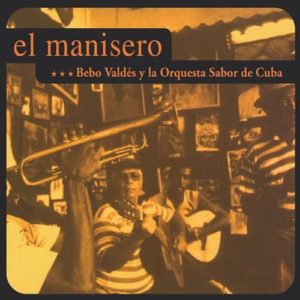Of all Cuban folkloric characters, the best known internationally is undoubtedly “The Manisero” (The Peanut Vendor). His figure with peanut tin; pants rolled; apron and tapered peanut cones in hand, has traveled more than one continent. Do not know why it is associated with a Chinese, but the truth is that there were many groundnut, all with charcoal canister down and peanuts on top, always calentico.
Riding on a staff, with feet turned into musical notes, Don Azpiazu with his orchestra-Casino Havana him around the world in a song titled “The Peanut Vendor”.
In 1930 Moisés Simón Rodríguez better known as Moses Simons was a composer, concert pianist and musical director for musical theater companies include the famous El manisero, arguably the most famous song created by a Cuban musician, which has been recorded in more than 160 versions and opened the door to the rise of the era of the rumba.
There were maniseros of all races and ages in all towns and cities. Each had its peculiar way of proclaiming what he sold. The neighborhood kids, paraphrased the proclamation as mischief and laughter and repeated games “hot roasted peanuts for the old who do not have teeth.”
The manisero survived in Cuba, but very different manisero I met. Now do not offer hot groundnut peanut and most are retired old people who use that office to see if they can get some additional income to survive which does not allow him his meager pension. Often peanuts and hot socato is nothing but people buy it because it is perhaps the only thing that is cheap in Cuba.
Notwithstanding manisero survives captured in paintings and sculptures, in the vernacular theater and especially music, which remains as the legitimate representative of our folklore.
UN PERSONAJE DEL VERDADERO FOLKLORE CUBANO: “EL MANISERO”.
De todos los personajes folclóricos cubanos, el más conocido internacionalmente es sin duda “El Manisero”. Su estampa con la lata de maní; los pantalones remangados; el delantal y los cónicos cucuruchos de maní en mano, ha recorrido más de un continente. No se por qué se le asocia a un chino, pero lo cierto es que había muchos maniceros, todos con su lata con carbón abajo y el maní encima, siempre calentico.
Cabalgando sobre un pentagrama, con los pies convertidos en notas musicales, Don Azpiazu con su orquesta Habana-Casino lo paseó por el mundo en un tema musical titulado “el manisero”.
En 1930 Moisés Simón Rodríguez mejor conocido como Moisés Simons fue un compositor, pianista de concierto y director musical para compañías de teatro lírico compone el célebre El manisero, posiblemente la más famosa canción creada por un músico cubano, la cual ha sido grabada en más de 160 versiones y abrió la puerta al auge de la era de la rumba.
Había maniseros de todas las razas y edades en todos los pueblos y ciudades. Cada uno tenía su modo peculiar de pregonar lo que vendía. Los niños del barrio, parafraseaban el pregón como travesura y, entre risas y juegos repetían: “maní tostado y caliente para las viejas que no tienen dientes”.
El manisero sobrevivió en Cuba, pero muy diferente al manisero que conocí. Ahora los maniceros no ofertan el maní caliente y la mayoría son viejitos jubilados que recurren a ese oficio para ver si pueden obtener algún ingreso adicional para subsistir lo que no le permite su escasa pensión. Muchas veces el maní está socato y de caliente nada, pero la gente lo compra porque es quizás lo único barato que queda en Cuba.
No obstante el manisero pervive plasmado en cuadros y esculturas, en el teatro vernáculo y sobre todo en la música, donde se mantiene como legítimo representante de nuestro folclor.
Agencies/MemoriasCubanas/Internet Photos/YouTube/ Arnoldo Varona/ TheCubanHistory.com
THE CUBAN HISTORY,HOLLYWOOD.







